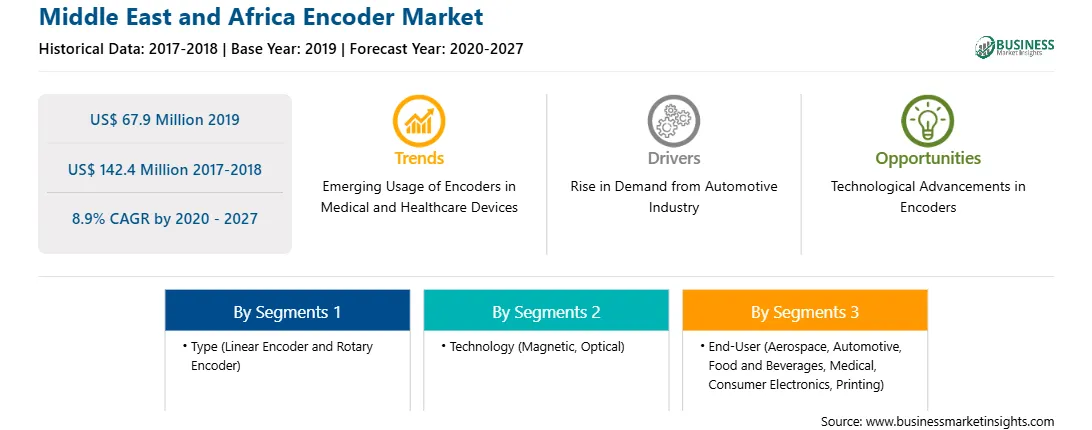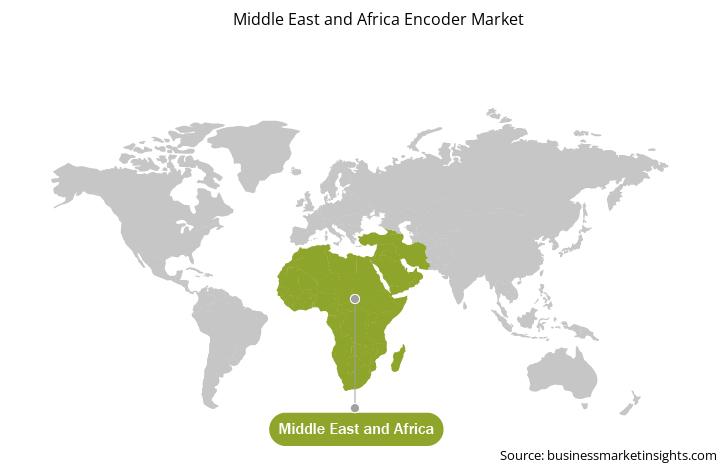Encoders are used in several sectors to provide feedback about of the movement of a rotating shaft and it also senses position, direction, and speed. It converts mechanical motion into an electrical signal, the signal is transmitted back to a controlling device, such as a counter. Technologies involved in encoders are magnetic, optical and capacitive. The optical technology is the most broadly used encoder motion translating technology. The encoder has a broad range of uses, including servo or VFD (Variable Frequency Drive) control, measuring, and counts. For VFD control, one might be running a pump on a VFD to fill a tank with liquid, one might request for a certain speed and want to verify that the speed is at the required rate. An encoder on the VFD is used for feedback of the speed. VFD is used to control the motor speed; the actual speed is measured with an encoder. The automobile sector is experiencing a considerable development in advanced technologies; various connected and driverless cars are in the developing phase. Advanced encoder technologies encourage automotive OEMs to adopt encoder devices; thus, the automobile industry has a massive impact on the MEA encoder market. In the past few years, warehouse automation systems have progressed rapidly due to developments in software and communication and control technology. Automotive guided vehicles (AGV) have aided greatly from such advances, and have been applied to a broad range of applications. The primary sensors used in AGV motion and directional control are incremental rotary encoders. The incremental encoders are broadly used in material handling equipment as they are built to offer precise, real-time data about AGV motor. Thus, the implementation of industrial automation across different industries is expected to create a significant demand for encoder in the coming years, which is further anticipated to drive the encoder market.
In MEA region, South Africa has the highest number of COVID-19 confirmed cases and it is followed by Saudi Arabia and UAE, among other countries. Since majority of the countries are exercising lockdowns, the demand for encoders are decreasing at a prominent rate. This is due to the fact that the key encoder purchasing countries have been restricting their investment on these components and are utilizing a fair percentage of their budget to combat COVID-19. The temporary shutdown of manufacturing facilities is also showcasing negative trend in the encoder market. The automotive industry requires a significant number of human labours, as the COVID-19 virus is spreading through human involvement, the sector is unable to function properly. The declining trend in automotive and semiconductor industry is reflecting a negative impact on the MEA encoder market.

Strategic insights for the Middle East and Africa Encoder provides data-driven analysis of the industry landscape, including current trends, key players, and regional nuances. These insights offer actionable recommendations, enabling readers to differentiate themselves from competitors by identifying untapped segments or developing unique value propositions. Leveraging data analytics, these insights help industry players anticipate the market shifts, whether investors, manufacturers, or other stakeholders. A future-oriented perspective is essential, helping stakeholders anticipate market shifts and position themselves for long-term success in this dynamic region. Ultimately, effective strategic insights empower readers to make informed decisions that drive profitability and achieve their business objectives within the market.

| Report Attribute | Details |
|---|---|
| Market size in 2019 | US$ 67.9 Million |
| Market Size by 2027 | US$ 142.4 Million |
| CAGR (2020 - 2027) | 8.9% |
| Historical Data | 2017-2018 |
| Forecast period | 2020-2027 |
| Segments Covered |
By Type
|
| Regions and Countries Covered | Middle East and Africa
|
| Market leaders and key company profiles |
|
The geographic scope of the Middle East and Africa Encoder refers to the specific areas in which a business operates and competes. Understanding local distinctions, such as diverse consumer preferences (e.g., demand for specific plug types or battery backup durations), varying economic conditions, and regulatory environments, is crucial for tailoring strategies to specific markets. Businesses can expand their reach by identifying underserved areas or adapting their offerings to meet local demands. A clear market focus allows for more effective resource allocation, targeted marketing campaigns, and better positioning against local competitors, ultimately driving growth in those targeted areas.

The encoder market in MEA is expected to grow from US$ 67.9 million in 2019 to US$ 142.4 million by 2027; it is estimated to grow at a CAGR of 8.9% from 2020 to 2027. There has been an enormous wave in the development of technologies, which has impacted encoders' design. Also, the semiconductor industry is driven by tech innovations, consumer trends, and better production processes. One of the biggest trends in the encoder industry is the increasing demand and requirement for lighter, smaller, and high-performing encoders. Various vendors across the countries are highly emphasized on designing products that are smaller and embed with more functionality. Notable players in the market focus on the miniaturize designs for their products to sync with changing trends in various industries. The robotics industry is importantly observing the growth of this miniaturization trend and the demand for miniaturized devices in this industry would see a substantial boost shortly, which, in turn will propel the growth of the encoder market.
In terms of type, the rotary encoder segment accounted for a larger share of the MEA encoder market in 2019. In terms of technology, the magnetic segment held the largest share of the encoder market in 2019. Further, the printing segment held the largest share of the market based on end-user in 2019.
A few major primary and secondary sources referred to for preparing this report on the encoder market in MEA are company websites, annual reports, financial reports, national government documents, and statistical database, among others. Dahua Technology Co., Ltd.; LTN Servotechnik GmbH; OMRON Corporation; Delta Electronics; and Rockwell Automation, Inc. are among the major companies listed in the report.
The Middle East and Africa Encoder Market is valued at US$ 67.9 Million in 2019, it is projected to reach US$ 142.4 Million by 2027.
As per our report Middle East and Africa Encoder Market, the market size is valued at US$ 67.9 Million in 2019, projecting it to reach US$ 142.4 Million by 2027. This translates to a CAGR of approximately 8.9% during the forecast period.
The Middle East and Africa Encoder Market report typically cover these key segments-
The historic period, base year, and forecast period can vary slightly depending on the specific market research report. However, for the Middle East and Africa Encoder Market report:
The Middle East and Africa Encoder Market is populated by several key players, each contributing to its growth and innovation. Some of the major players include:
The Middle East and Africa Encoder Market report is valuable for diverse stakeholders, including:
Essentially, anyone involved in or considering involvement in the Middle East and Africa Encoder Market value chain can benefit from the information contained in a comprehensive market report.